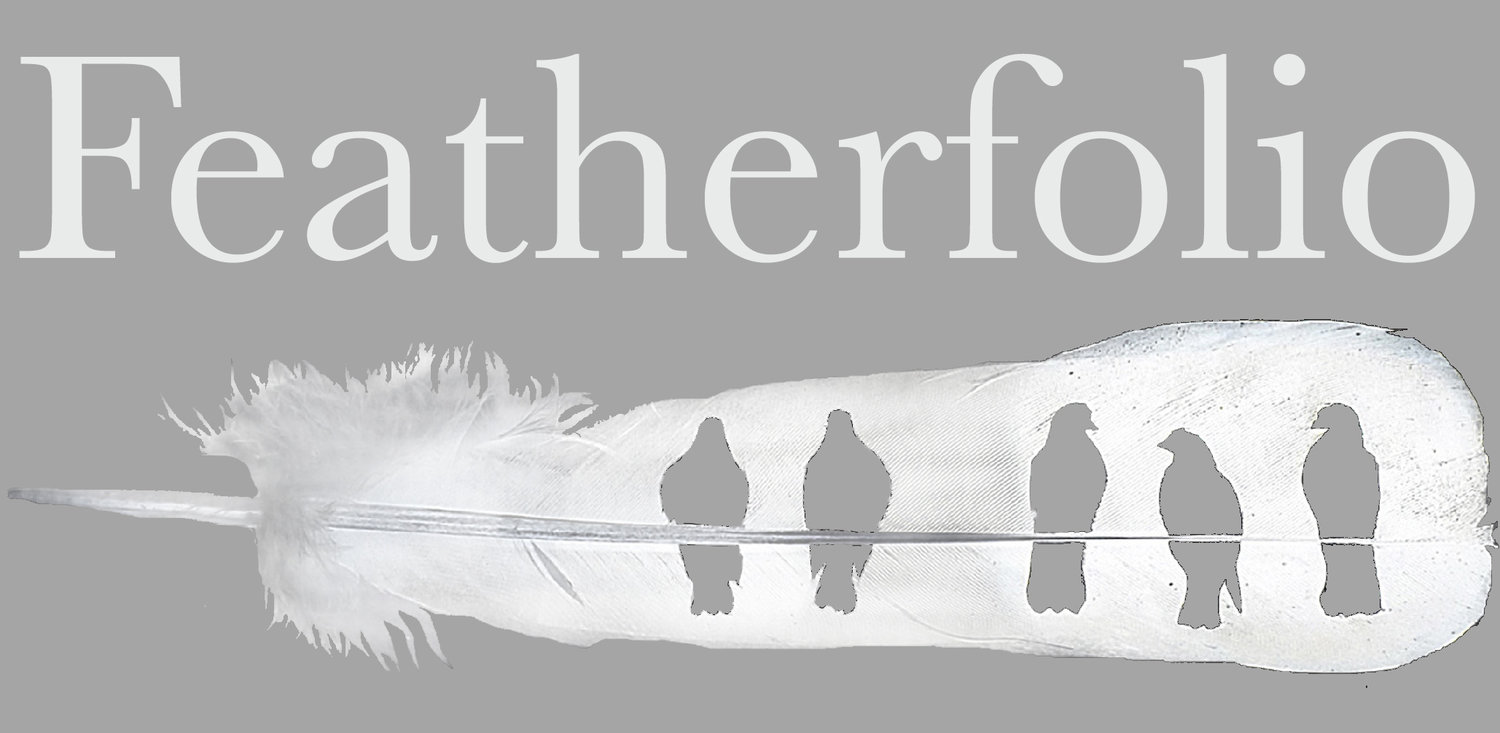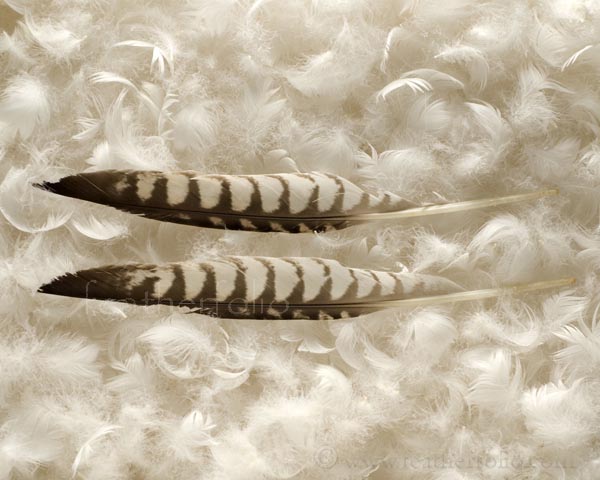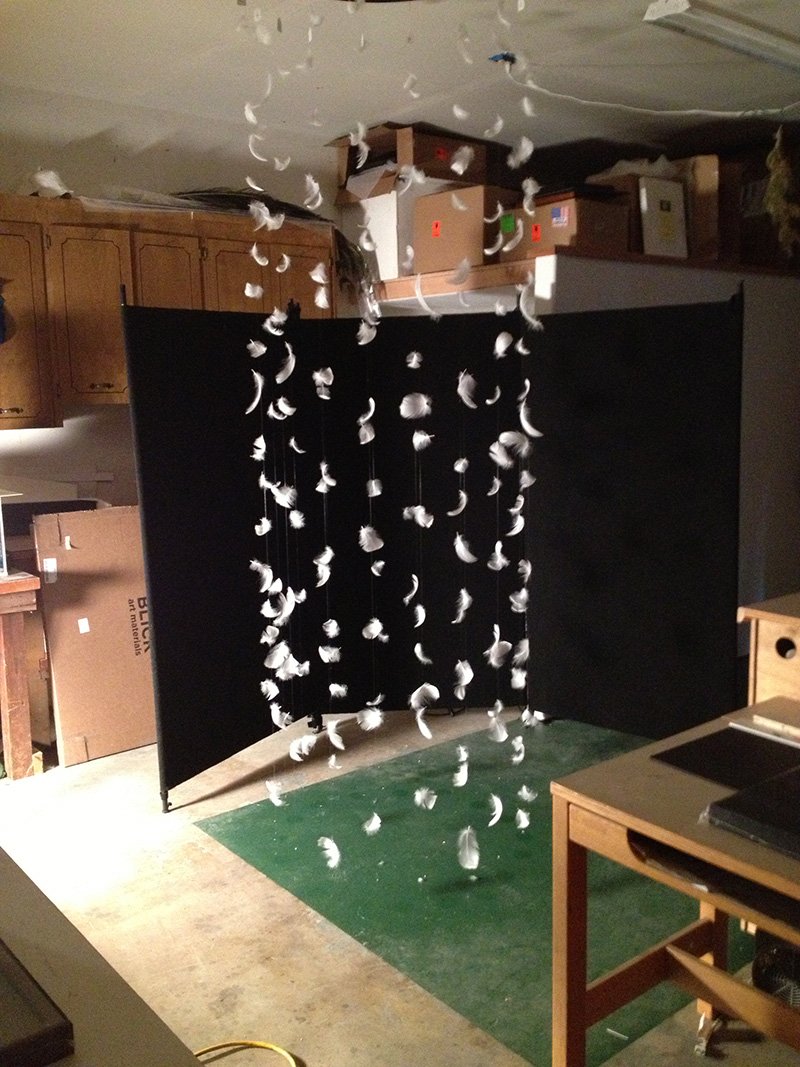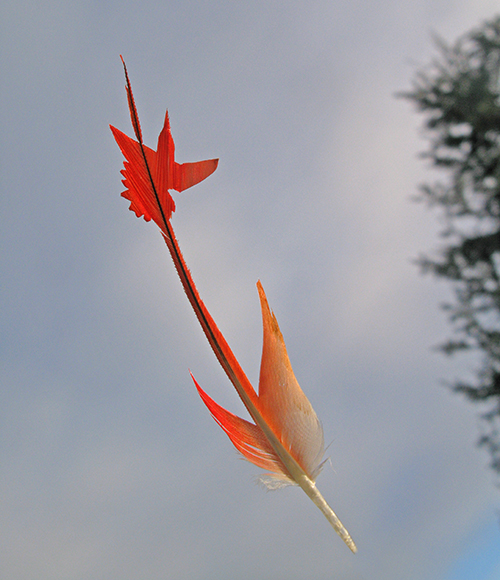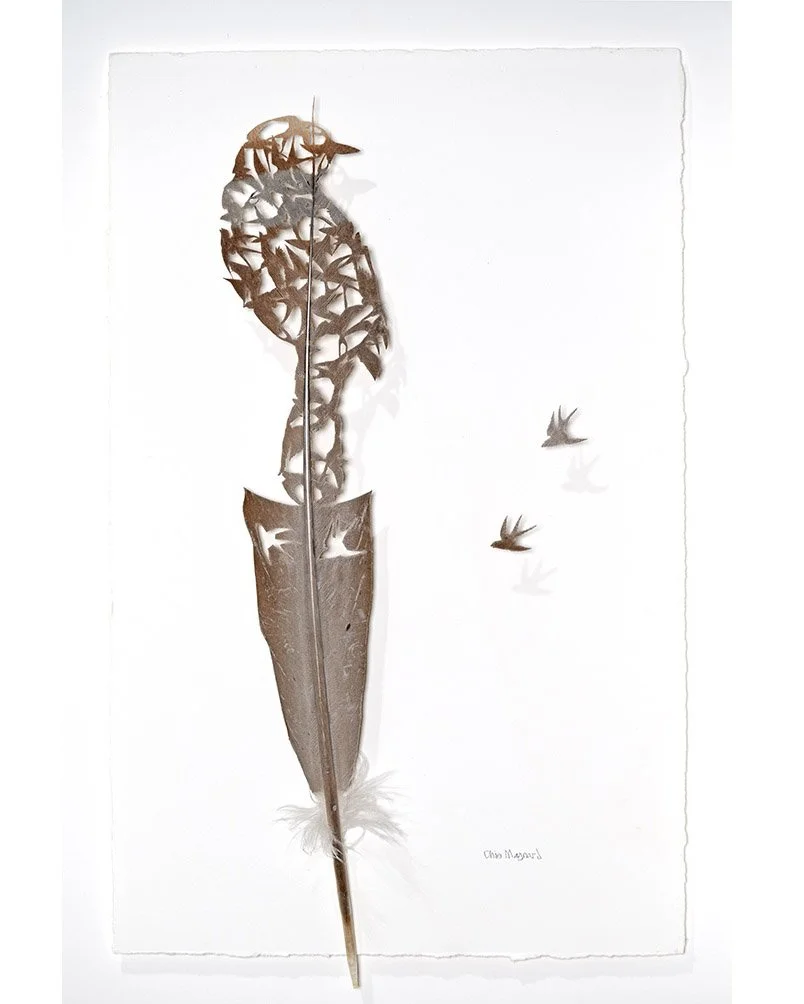Where I live, I can’t legally have most North American bird feathers, so most of my feathers are from aviaries. Since birds shed their feathers about once a year, my favorite way to get feathers are from these sheds. It is like a gift and it is nice to know that the bird is still alive and hopefully well.
I even raise a couple of Impeyan Pheasants, the National Bird of Nepal. I collect and use their feathers and get to know what the birds are like even though they are caged, not at 13,000 feet high in the Himalayas. Since my birds are molting now, I picked up their feathers this morning and took this picture this article. The male is fuzzy in the background. I pick up every shiny feather he sheds.
One time I received a large bag of tiny parakeet feathers from a woman. Her mother was 75 years old, she told me, when she got a parakeet to keep her company after her husband died. Her mother picked up every single feather from her bird for 22 years.
Most people who send me feathers don’t have time to pick up every tiny one. So most of the molted feathers I use in my shadowboxes are fairly large. Some are given to me and the rarer ones I purchase or trade for. I have long established relations with several bird owners, zoos, and breeders as well.
Sadly, birds die from disease, predators, accidents, and old age. Parrots that die of old age can be older than me—they live for a long time. Their owners sometimes would rather see the feathers be of use in art rather than be buried with the bird. So I use feathers from these birds too, especially the tinier feathers. Several owners have commissioned me to memorialize their deceased bird in a piece of art.
